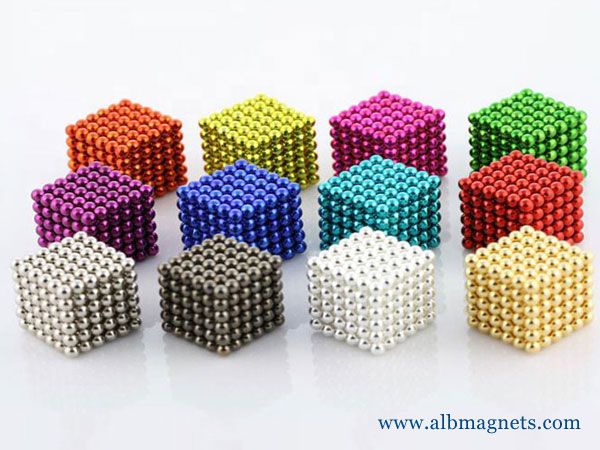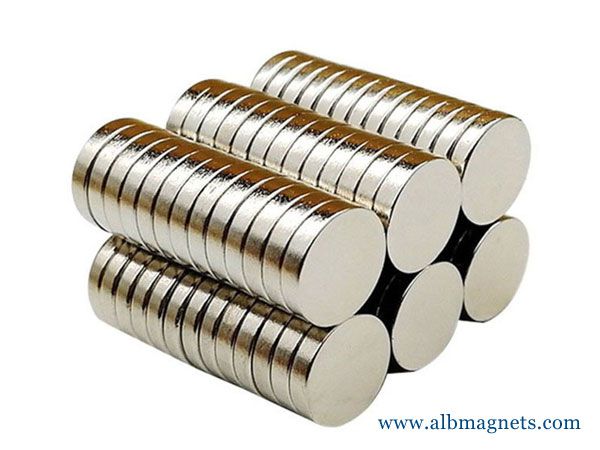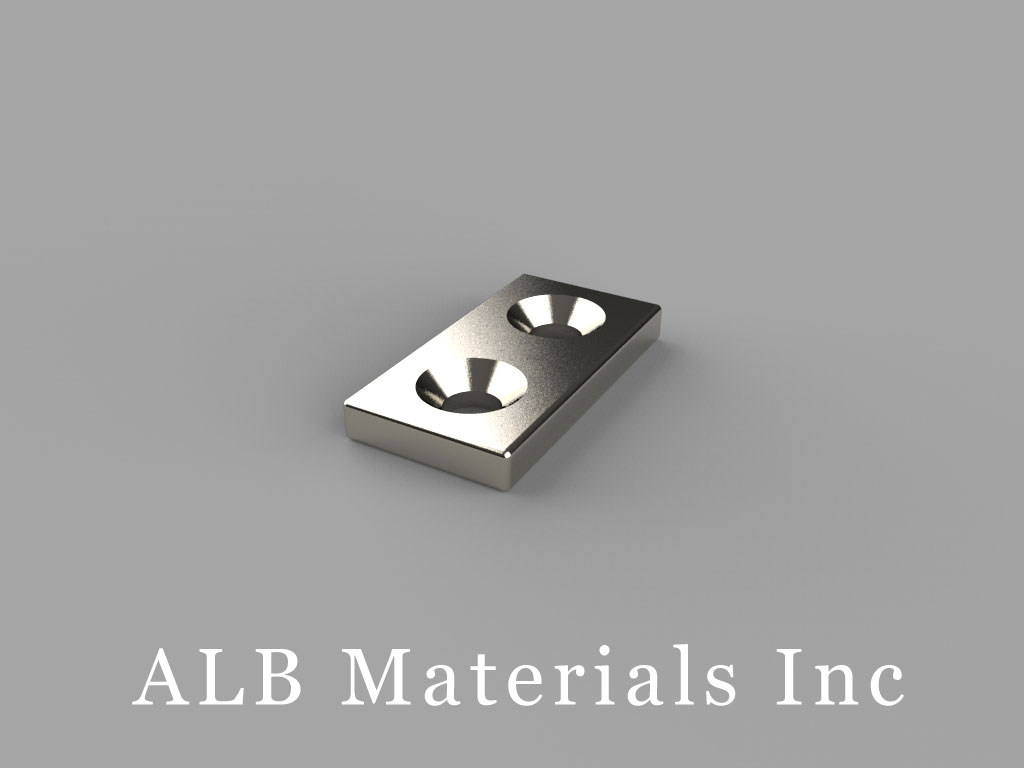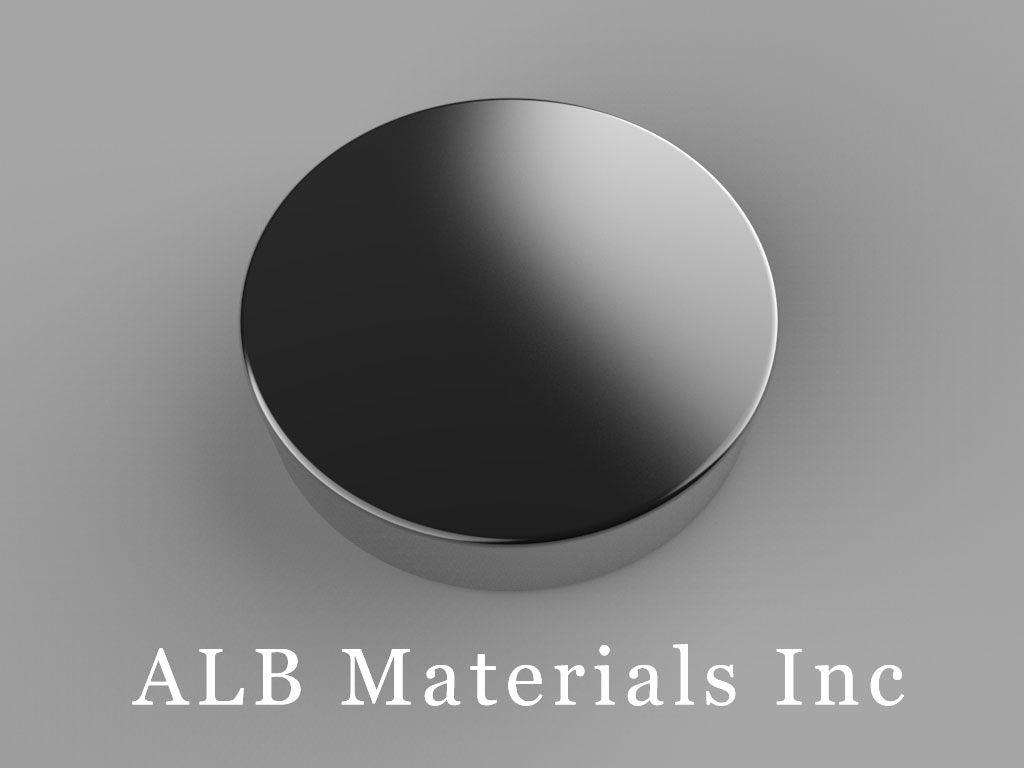401 Ryland St. Ste 200-A,
Reno, NV 89502
United States
E-mail: sales@albmaterials.com
- D41G-N52 Neodymium Magnets, 1/4 inch dia. x 1/16 inch thick
- B888BR-N52 Rubber Coated Neodymium Magnets
- B88X0 Neodymium Magnets, 1/2 inch x 1/2 inch x 1 inch thick
- D6x1.5mm-N35 Neodymium Magnets
- D7x1mm Neodymium Magnet, 7 x 1mm Disc Magnet
- DC4SH Neodymium Magnets, 3/4 inch dia. x 1/4 inch thick
- MMS-A-X4 Standard Mounting Magnets
- D76 Neodymium Magnets, 7/16 inch dia. x 3/8 inch thick
- B80x20x5mm Neodymium Magnet, 80 x 20 x 5mm Block Magnet
- BY064 Neodymium Magnets, 2 inch x 3/8 inch x 1/4 inch thick
- D-D23H20-N50 Neodymium Magnet, 23x20mm Disc Magnet
- B-W3.4H3.5L20-N48 Neodymium Magnet, 20x3.4x3.5mm Block Magnet
- MMS-D-X8 Standard Mounting Magnets
- MMS-E-A Standard Mounting Magnets
- D84PC-ORA Plastic Coated Neodymium Magnets
- C-D4H5-N45 Neodymium Magnet, 4x5mm Cylinder Magnet
An Attractive Property Of The Magnet
Attractive Property of Magnets
the experiment demonstrates the power of the magnet to attract iron pieces.
Take a paper cup and clamp it to a stand.
Place a magnet inside this paper cup.
Take a metal pin and tie it to a thread.
The thread must be short.
Tie the other end of the thread to the bottom of the stand.
Raise the pin towards the magnet in the cup and leave it.
Observe that the pin remains raised in the air without any support.
It continues to be suspended upright in mid-air as if suspended by some invisible thread.
This is because the magnet attracts the pin and suspends it in the air.
This simple experiment clearly proves the attractive property of the magnet.
Magnetic Field
We can explain this dual nature of magnetic force by proposing that each magnet has two poles, north pole (N) and south pole (S). You will observe two things during the activities:
1) When two magnets are brought near each other, like poles repel; opposite poles attract.
2) When a magnet is brought near a piece of iron, the iron also gets attracted to the magnet, and it acquires the same ability to attract other pieces of iron.
magnet: magnets, magnetic fields, and magnetic poles behavior of a bar magnet with its magnetic field concentrated at its north-seeking and south-seeking poles.
Magnetic pole, the region at each end of a magnet where the external magnetic field is strongest.
A bar magnet suspended in Earth’s magnetic field orients itself in a north-south direction.
The north-seeking pole of such a magnet, or any similar pole, is called a north magnetic pole.
The south-seeking pole, or any pole similar to it, is called a south magnetic pole.
Unlike poles of different magnets attract each other;
like poles repel each other.
magnetic attraction and repulsionBar magnets showing the attraction of opposite poles and repulsion of like poles.
The magnetic force between a pole of one long bar magnet and that of another was described by an inverse square law as early as 1750.
If, for example, the separation between the two poles is doubled, the magnetic force diminishes to one-fourth of its former value.
Breaking a magnet in two does not isolate its north pole from its south pole.
Each half is found to have its own north and south poles.
Magnetic forces, in fact, cannot be traced to unit magnetic poles of submicroscopic size in direct contrast to electric forces that are caused by actual discrete electric charges, such as electrons and protons.
Indeed, magnetic forces themselves also fundamentally arise between electric charges when they are in motion.
Properties of Magnets
The main properties of magnets are that they have two poles, (north and south) there is an attractive force between them.
How Do Magnets Work?
Magnetic behavior is ultimately caused by the motion of electrons.
A moving electric charge generates a magnetic field, and – as you may expect – magnets and magnetic fields are intricately linked.
Since an electron is a charged particle, its orbital motion around the nucleus of an atom creates a small magnetic field.
Generally speaking, though, there are tons of electrons in a material, and the field created by one will be canceled out by the field created by another, and there won’t be any magnetism from the material as a whole.
Some materials work differently, though.
The magnetic field created by one electron can affect the orientation of the field produced by neighboring electrons, and they become aligned.
This produces what’s called a magnetic “domain” within the material, where all of the electrons have aligned magnetic fields.
Materials that do this are called ferromagnetic, and at room temperature, only iron, nickel, cobalt and gadolinium are ferromagnetic.
These are the materials that can become permanent magnets.
The domains within a ferromagnetic material will all have random orientations;
even though neighboring electrons align their fields together, other groups are likely to be aligned in a different direction.
This leaves no magnetism on the large scale because different domains cancel each other out just like the individual electrons do in other materials.
However, if you apply an external magnetic field – by bringing a bar magnet close to the material, for example – the domains start to align.
When all of the domains are aligned, the whole piece of material effectively contains a single domain and develops two poles, generally called north and south (although positive and negative may also be used).
In ferromagnetic materials, this alignment continues even when the external field is removed, but in other types of material (paramagnetic materials), the magnetic properties are lost when the external field is removed.
What Are the Properties of a Magnet?
The defining properties of magnets are that they attract some materials and the opposite poles of other magnets, and repel like poles of other magnets.
So if you have two permanent bar magnets, pushing two north (or south) poles together produces a repulsive force, which gets stronger the closer the two ends are brought together.
If you bring two opposite poles together (north and south) there is an attractive force between them.
The closer you bring them together, the stronger this force is.
Ferromagnetic materials – like iron, nickel, and cobalt – or alloys containing them (such as steel) are attracted to permanent magnets, even if they aren’t producing a magnetic field of their own.
They are only attracted to the magnets, though, and they won’t be repelled unless they start producing a magnetic field of their own.
Other materials, such as aluminum, wood, and ceramics, aren’t attracted to magnets.
Properties of Magnets: Lesson for Kids
Magnets are very useful tools that we use every day without even realizing it.
All magnets have certain scientific properties.
Here you will learn about the three main properties of magnets.
Everyday Uses
When you're watching your favorite show on television, listening to your favorite song on the radio, or talking to your friend on the phone, did you know you're using magnets? Even when you turn on the light in your bedroom, you are using a magnet that creates electricity.
Let's explore the three main properties of magnets that make them such useful tools.
What Do They Attract?
Let me introduce you to Magnet Girl.
She was a normal kid just like you until she took a shortcut home from school and passed by a magnet factory.
The next morning she woke up with magnetic powers!
One day her father accidentally dropped an entire box of 500 nails.
Magnet Girl to the rescue! She placed her hands just above the pile of nails and they seemed to leap off the ground onto her hand.
She was able to do this because the nails were made of a metal called iron.
If those nails were made of wood, plastic or glass, Magnet Girl would not have been able to pick them up with her magnetic powers.
One property of magnets is the type of metal they attract or stick to.
These metals are iron, cobalt, and nickel.
Even though gold and silver are pretty metals, they are not attracted to magnets.
The large magnet at the end of this crane is picking up metal.
Opposites Attract
Magnet Girl wanted to show her powers to her friends.
She was using another magnet, but instead of it sticking to her, it acted like it wanted to getaway! She couldn't figure out what she was doing wrong.
She didn't realize that magnets have two poles: a north pole and a south pole.
The poles are simply the ends of a magnet.
The same poles of two magnets will go away from, or repel, each other.
Opposite poles will stick to, or be attracted to, each other.
The ends of a magnet also have a stronger magnetic force than the middle.
Once she turned the magnet around and touched the opposite pole, she was able to show her friends her new powers!
Workings of A Transformer
Since magnetism is related to the movements of electrons.
It is not surprising that the basic ideas of magnetism are very similar to those of electrostatics.
All the magnets have two types of poles: north-seeking poles or north poles and south-seeking poles or south poles.
The magnetic strength is the strongest at the poles of the magnet.
When you freely suspend a bar magnet in a horizontal position, the magnetic field of the bar magnet will interact with the magnetic field of the Earth.
This will cause the bar magnet to come to rest in a north-south direction, where the north pole of the magnet points to the north pole of the Earth.
Like poles repel and unlike poles attract.
(just as like charges repel and unlike charges attract).
Magnets attract magnetic materials such as iron, steel, cobalt, and nickel.
The stronger a magnet, the larger will be the attractive or repulsive force between other magnets.
The closer together the two magnets are, the greater is the magnetic force between them.
Properties of Magnets: Magnet is a material with an invisible magnetic field around it.
This magnetic field makes the object as a supernatural material with amazing properties like attraction and repulsion.
Read further to learn more about the properties of magnets.
Attractive Property of magnets – Magnets can attract some materials, called ferromagnetic substances towards it.
Ferromagnetic materials are those materials that are attracted by a magnet like iron fillings, steel pins, etc.
To experience this property of a magnet, try to bring some iron fillings near the magnet.
When you try this experiment, you will notice that the magnet attracts those iron filings towards it.
Moreover, you will see that the ends of the magnet attract more iron fillings than the middle.
The point where the attraction appears to be maximum is called the poles of a magnet.
And the poles of a magnet are located on the ends of it.
Directive Property – We have already discussed a magnet’s poles.
Every magnet has two poles and they are the South (S) and the North (N) poles.
Whenever we freely suspend a magnet, it always comes to rest as pointing it’s the South Pole and the North Pole towards the earth’s south and north respectively.
This general property of a magnet is referred to as directive property.
Like poles repel each other and unlike poles attract: If you bring two magnets closer, either these magnets attract each other or repel from each other.
If you are bringing the magnet’s same poles together, they repel and if you are bringing their different poles together, they will attract.
If you bring north pole of a magnet closer to the north pole of another magnet, they will surely repel but if you bring the south pole of a magnet near to the north pole of another magnet, they will attract each other.
No monopole exists in magnet: Have you ever broken a magnet into pieces? If a magnet breaks into pieces, each piece becomes a separate magnet with North and South poles.
That means no monopole exists in magnets.
If the pieces are broken, again and again, each part regains its power of magnetism with separate North and South poles.
Otherwise, we can say that every magnet has two poles.
What causes magnetism?
What is Magnetism? Magnetism is a physical property produced by the motion of electric charge, resulting in attractive and repulsive forces between objects.
Magnetism is a physical property produced by the motion of electric charge, resulting in attractive and repulsive forces between objects.
All magnets have two ends where its magnetic effects are strongest.
These regions are called the poles of the magnets.
When two magnets are brought near each other they exert forces on each other.
Magnetic forces behave like electric forces involving attraction and repulsion.
Magnetic poles always appear in pairs.
If a magnet is cut in half each piece will still have a north and south pole.
What is the unit of the magnetic field?
The term 'magnetic field' is used for two distinct but closely related fields denoted by the symbols B and H.
In the International System of Units, H is measured in units of amperes per meter and B is measured in teslas or newtons per meter per ampere.
Where does magnetism come from?
All atoms are made up of a nucleus made of protons and neutrons which are held together tightly by a strong force and electrons which are thought of as revolving around the nucleus bound by an electric force.
The electrons also rotate or spins around its own axis. The spinning of the electron produces a magnetic dipole.
This is one of the fundamental properties of an electron that has a magnetic dipole moment, i.e., it behaves like a tiny magnet.
If the majority of electrons in the atom spins in the same direction, a strong magnetic field is produced.
The direction of the electron's spin determines the direction of the magnetic field.
If the same number of electrons in the atom spins in opposite directions, the electron spins will cancel out.
Thus, the magnetism will also be canceled.
What is Ferromagnetism?
Ferromagnetism is the basic mechanism by which certain materials (such as iron) form permanent magnets, or are attracted to magnets.
In physics, several different types of magnetism are distinguished.
Ferromagnetism is the strongest type: it is the only one that typically creates forces strong enough to be felt, and is responsible for the common phenomena of magnetism in magnets encountered in everyday life.
Ferromagnetic materials such as soft iron are easily magnetized if you bring an iron nail close to the magnet and stroke it in the same direction then they can retain their magnetism even after removed from the magnet.
What is a Magnetic field?
The region that magnetic forces act is called a magnetic field.
A magnetic field is represented by lines of force extending from one pole of a magnet to the other pole.
In everyday life, magnetic fields are most often encountered as a force created by permanent magnets, which pull on ferromagnetic materials such as iron, cobalt, or nickel, and attract or repel other magnets.
Above image shows the lines of force between two magnets Right image shows the force of repulsion between two north poles.
Left image shows lines of attractive forces between the north and south poles of magnets.
What is a magnetic domain?
You can think of a magnetic domain as a tiny magnet with a north pole and south pole.
The properties of these magnets as stated above is due to the action of the spinning electrons in atoms.
Groups of atoms join in such a way that their magnetic fields are all arranged in the same direction.
The region in which magnetic fields of individual atoms are lined up in the same direction is called a magnetic domain.
All materials are made up of many magnetic domains.
In unmagnetized materials, the domains are randomly aligned in different directions and cancel each other out.
Material from Unmagnetized Material
In a magnet, all the domains are oriented in the same direction.
In the case of a nail, the domains can be aligned in the same direction causing the nail to become magnetic. When a ferromagnetic material is placed in a strong magnetic field it causes all the domains to line up and produce a strong magnetic field.
This explains how a magnet can pick up a group of iron paper clips.
The magnet aligns all the domains in the paper clip creating tiny magnets within the paper clip.
When the magnet is removed the domains return to their random state.
Material from Magnetized Material
Even a strong magnet can be demagnetized if the domains are disrupted by force or heat.
Part of the content in this article is reproduced from other media for the purpose of transmitting more information and does not mean that this website agrees with its views or confirms the authenticity of its content. It shall not bear direct responsibility and joint liability for the infringement of such works.
If there is any infringement, bad information, error correction, and other issues in the content of this page, please contact us at info@albmaterials.com
Link to this article: https://www.albmagnets.com/blog/an-attractive-property-of-the-magnet.html
How to choose and buy a strong neodymium magnet? ALBMagnets is a professional company for strong magnet design and manufacturing,
providing you with reliable N35, N38, N42, N52, N42SH and other grade super neodymium magnets and SmCo rare earth magnets.













